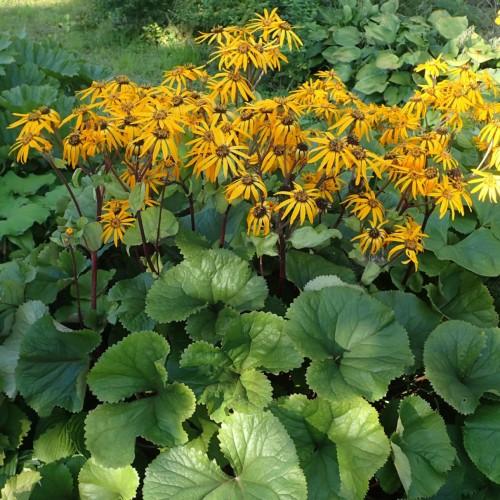
leopard plant
Ligularia dentata 'Othello'
Cycle:
Herbaceous Perennial
Watering:
Frequent
Hardiness Zone:
3 - 8
Flowers:
Flowers In Summer
Sun:
Filtered shade, Full sun only if soil kept moist, Part sun/part shade
Soil:
Humus rich
Fruits:
Fruits In Summer Ready In Fall
Leaf:
Yes
Growth Rate:
High
Maintenance:
Moderate
Care Level:
Medium
watering
Leopard plant (Ligularia dentata 'Othello') should be watered twice per week. During the growing season, provide the plant with 1 inch of water each time you water. Be sure to check the soil 1 to 2 inches down to ensure that the soil is moist but not soggy. During the winter months, watering should be reduced to once per month as the plant enters its dormant stage. Be sure to check the soil to ensure its still moist before watering.
sunlight
Leopard plant (Ligularia dentata 'Othello') grows best in bright, indirect sunlight. In its native habitat, it would receive dappled sunlight or partial shade. If grown indoors, a location near an east-facing window or a southeast-facing window with 4 to 6 hours of direct sun per day is best, though too much sun exposure can cause it to wilt. When grown outdoors, it should be planted in a partially shaded area, such as beneath a tree, and shielded from the hottest sun around midday.
pruning
Leopard Plant (Ligularia dentata 'Othello') should be pruned lightly during the summer months, once the plant is established and flowering begins to decline. Pruning is most effective when done in late spring or early summer, as the flowers will start to die off with the onset of colder weather. Pruning should be done by removing the flower stalks and dead or dying flowers, then shaping the plant and cutting back the foliage as necessary. It is important to note that the Leopard Plant does not have to be pruned or cut all the way back to the soil, as this can cause damage and stress to the plant. A light pruning and shaping is recommended, as new foliage will quickly regrow.
